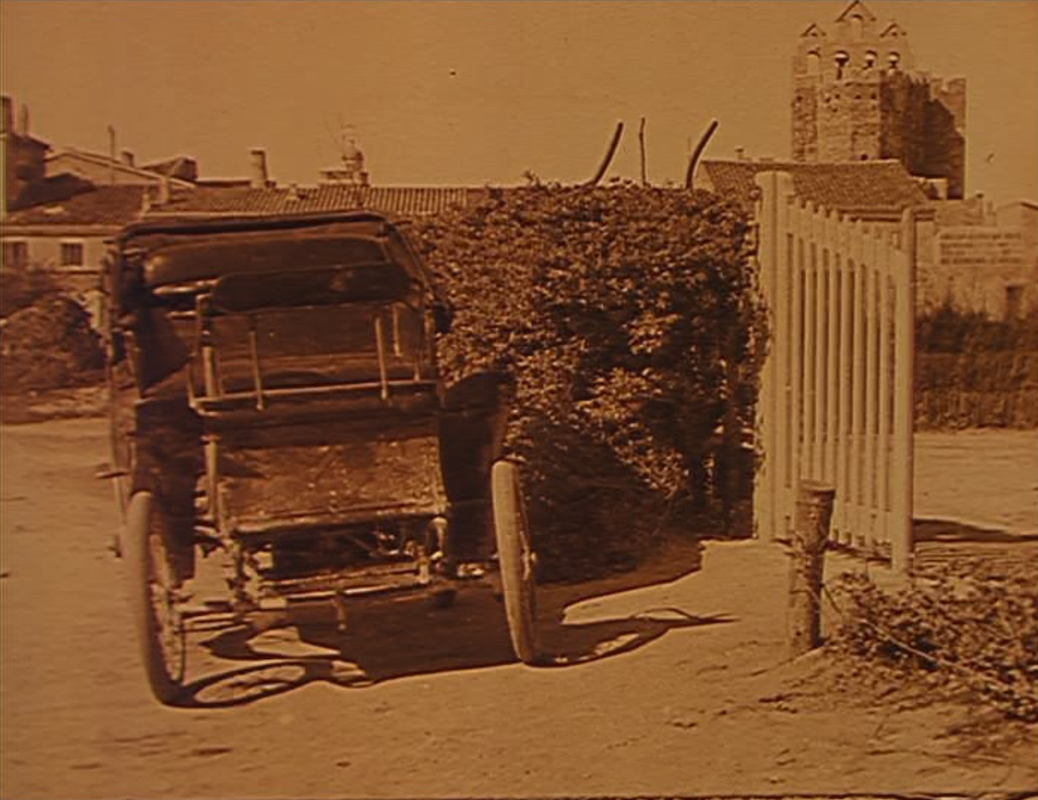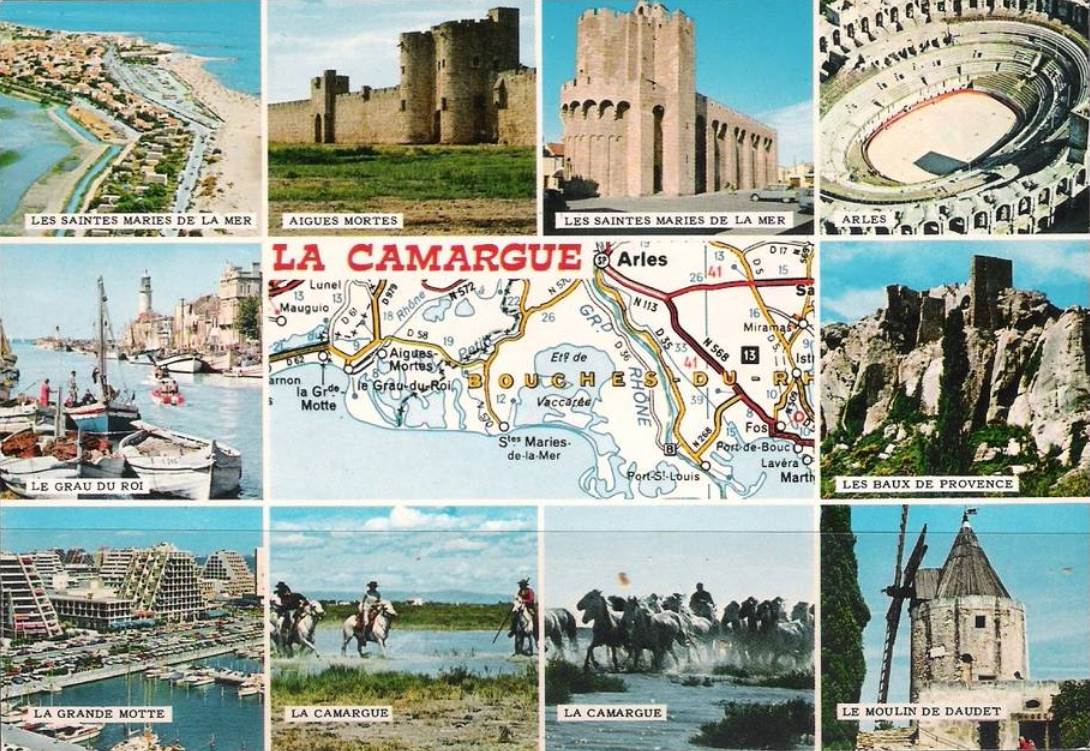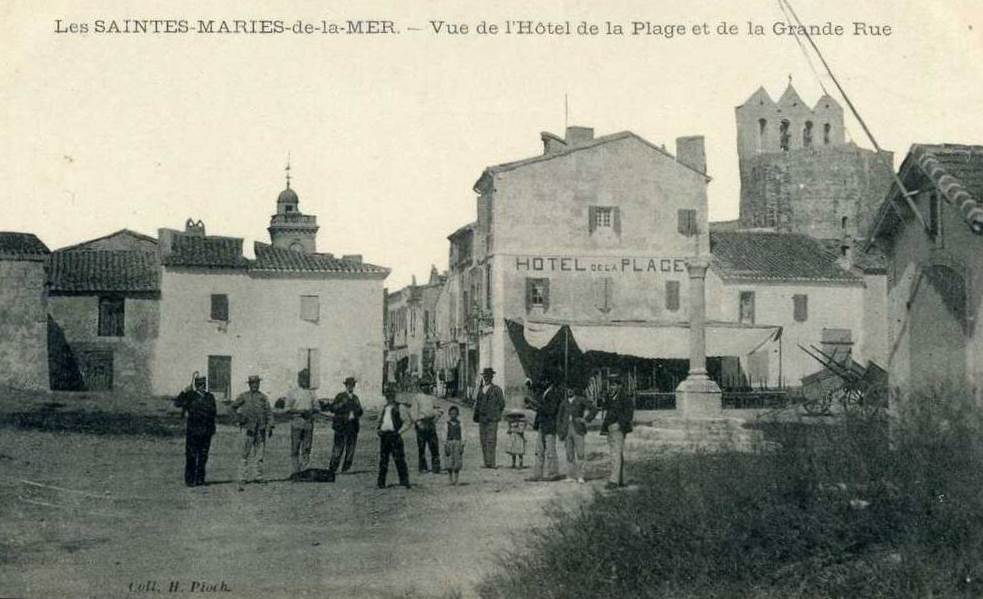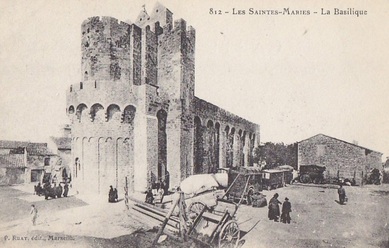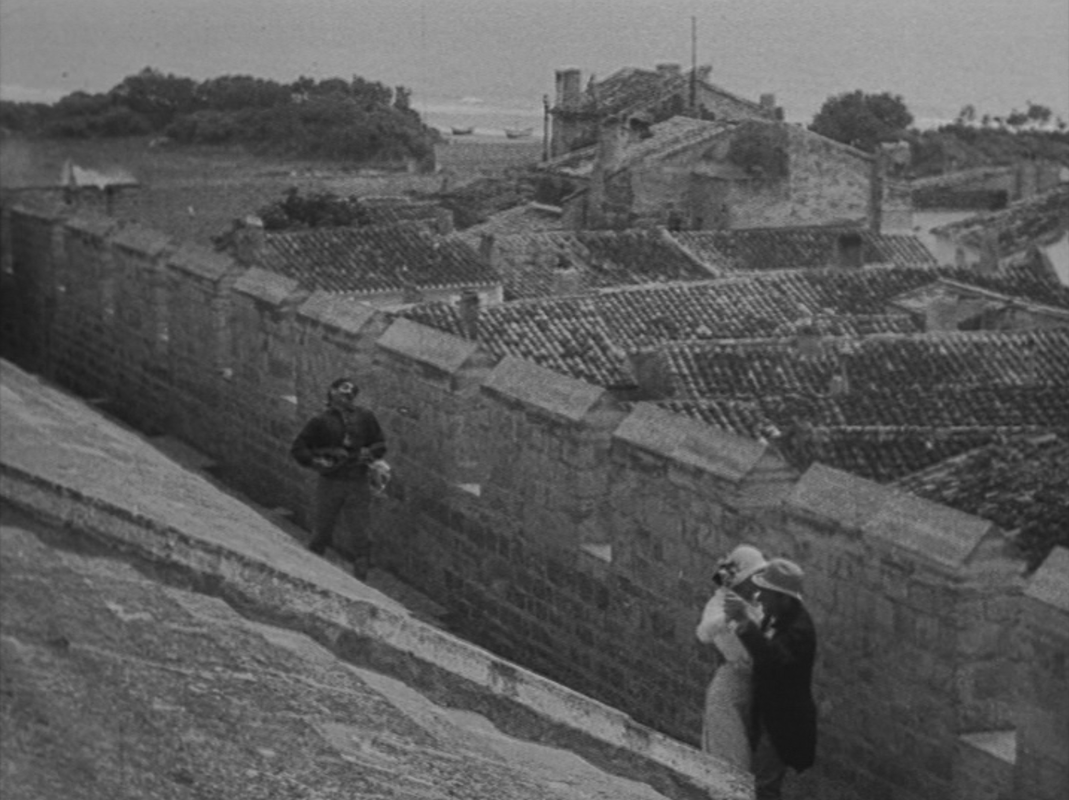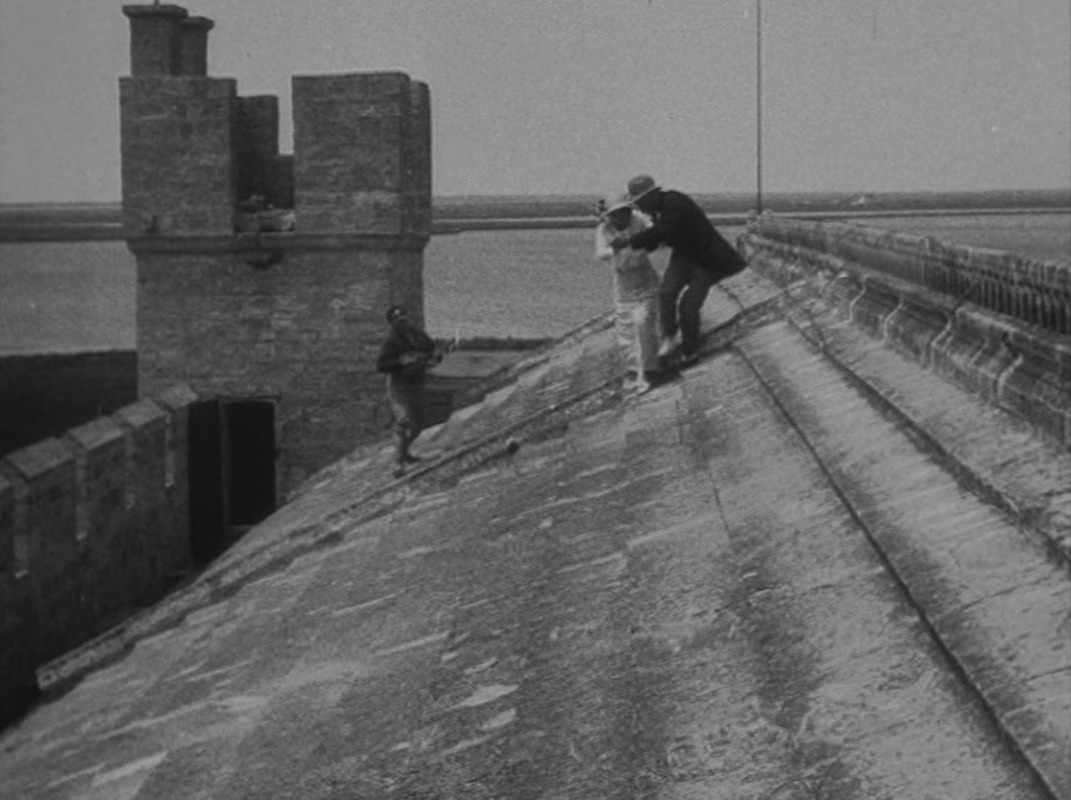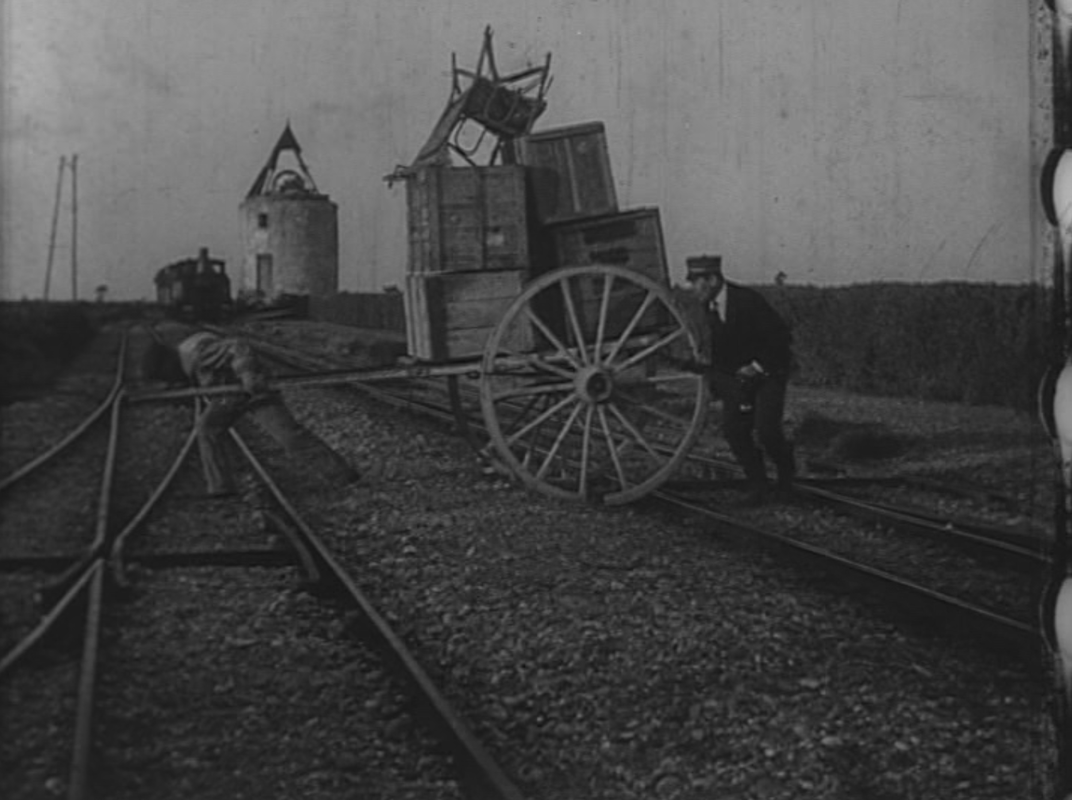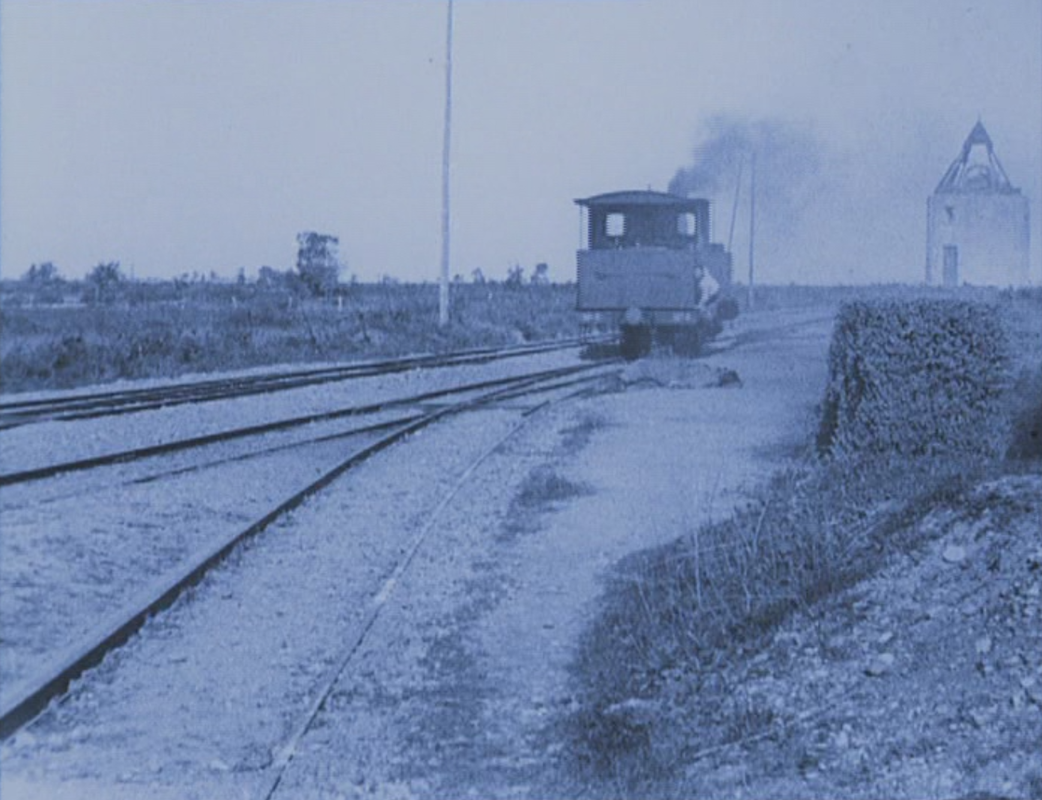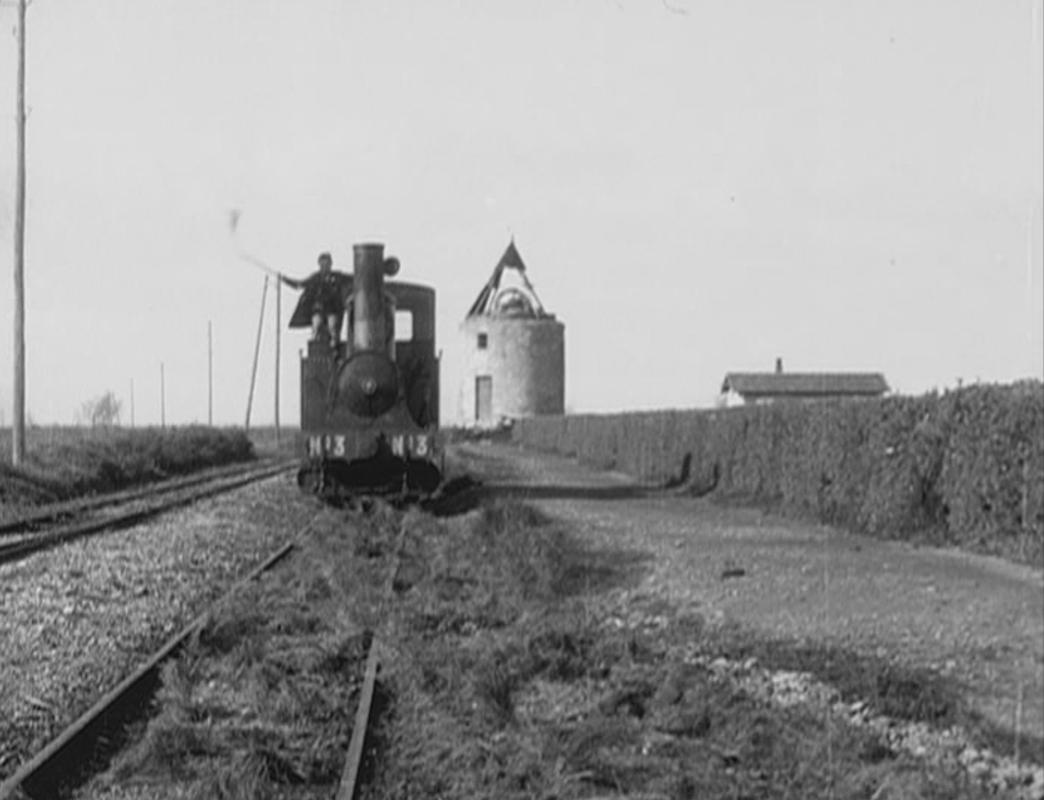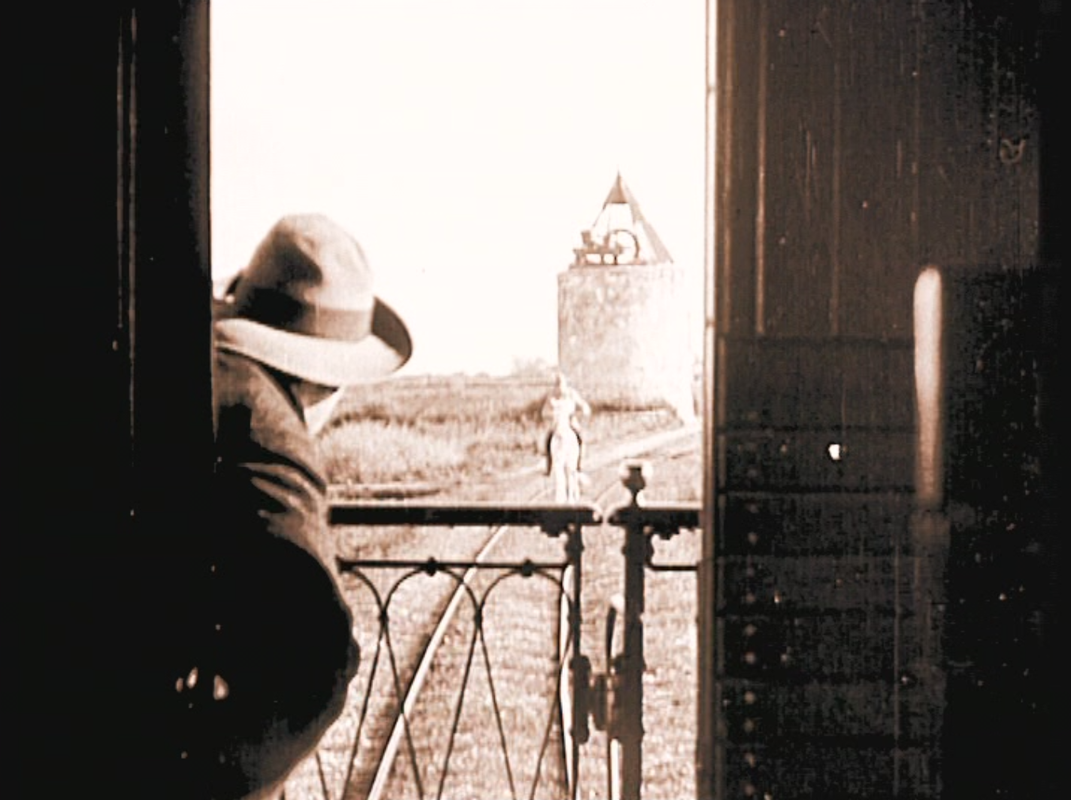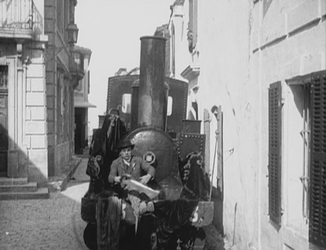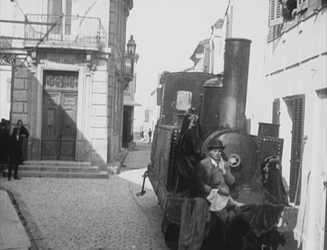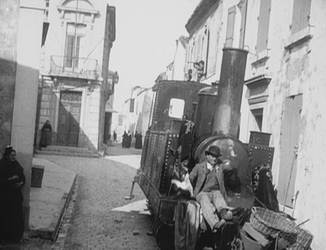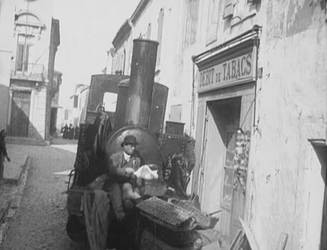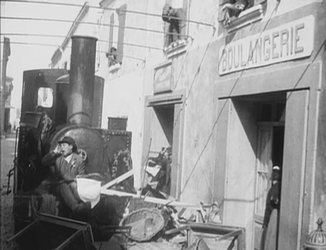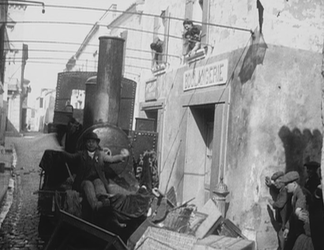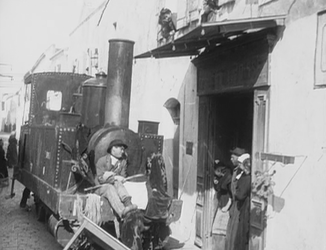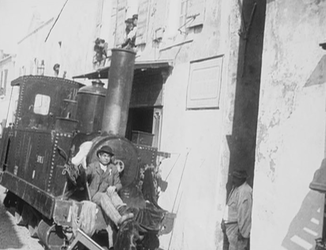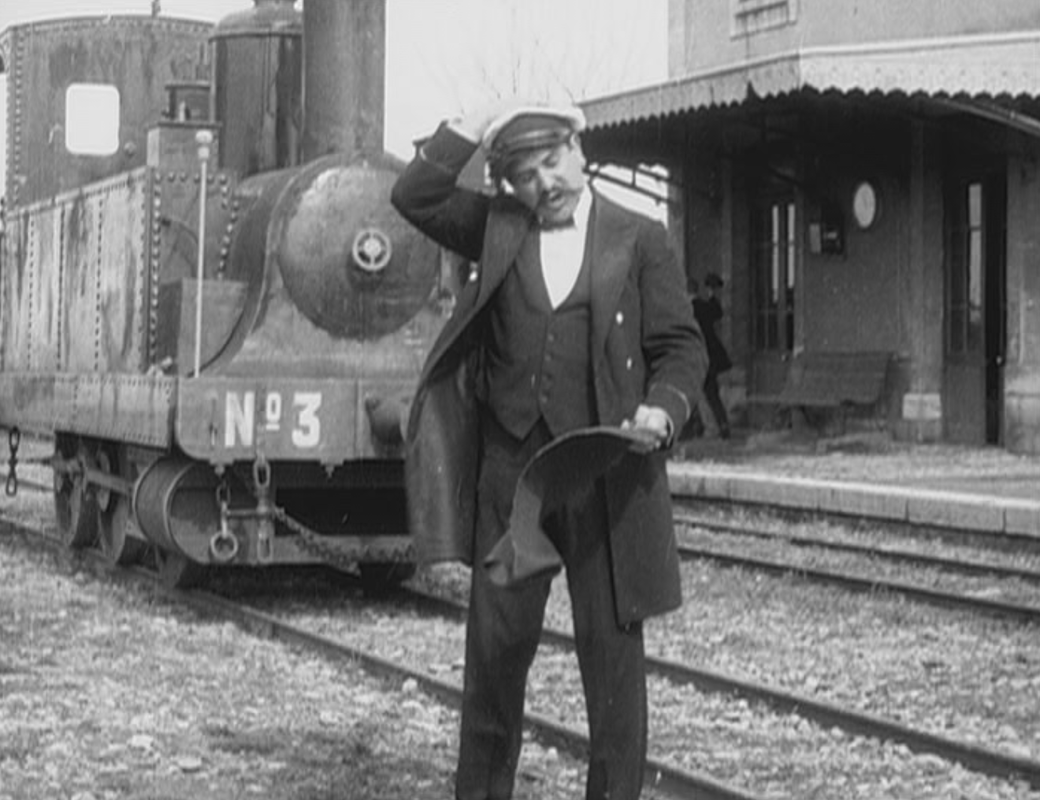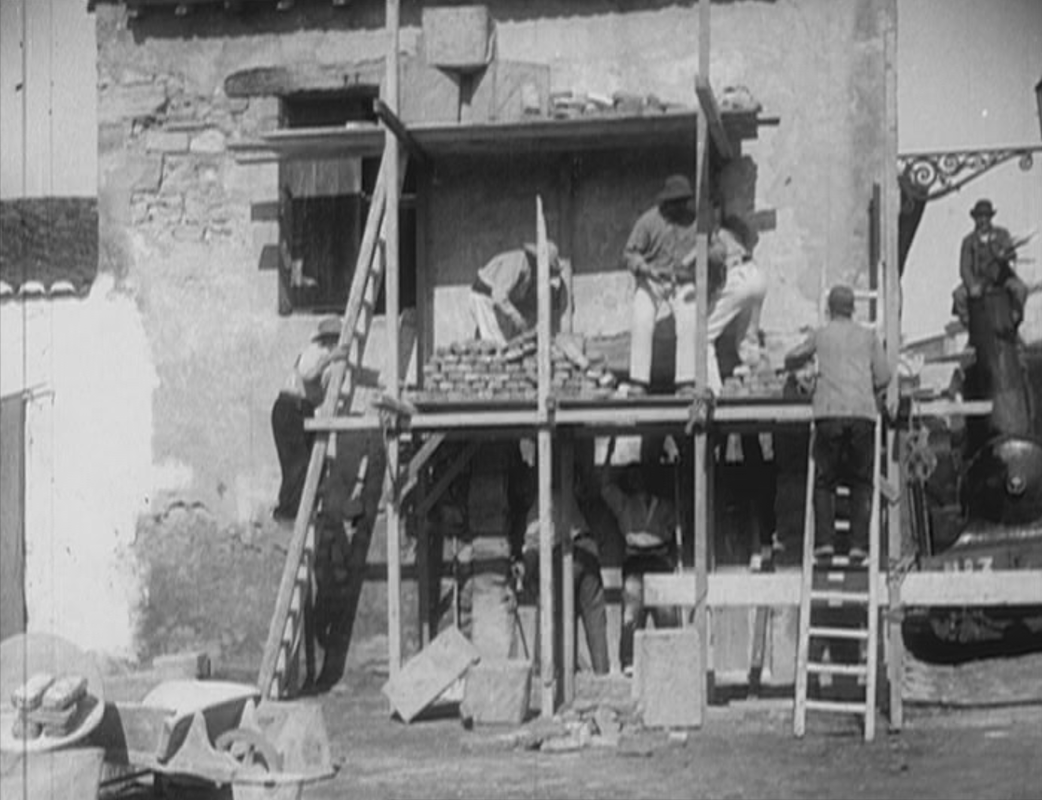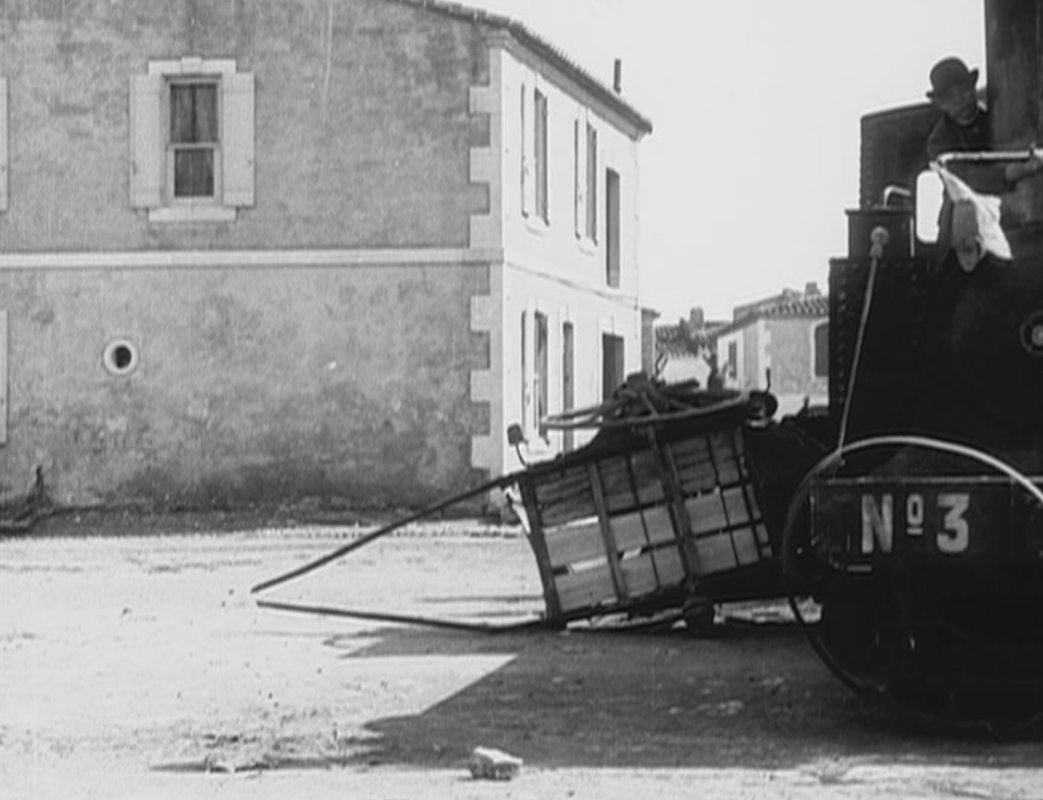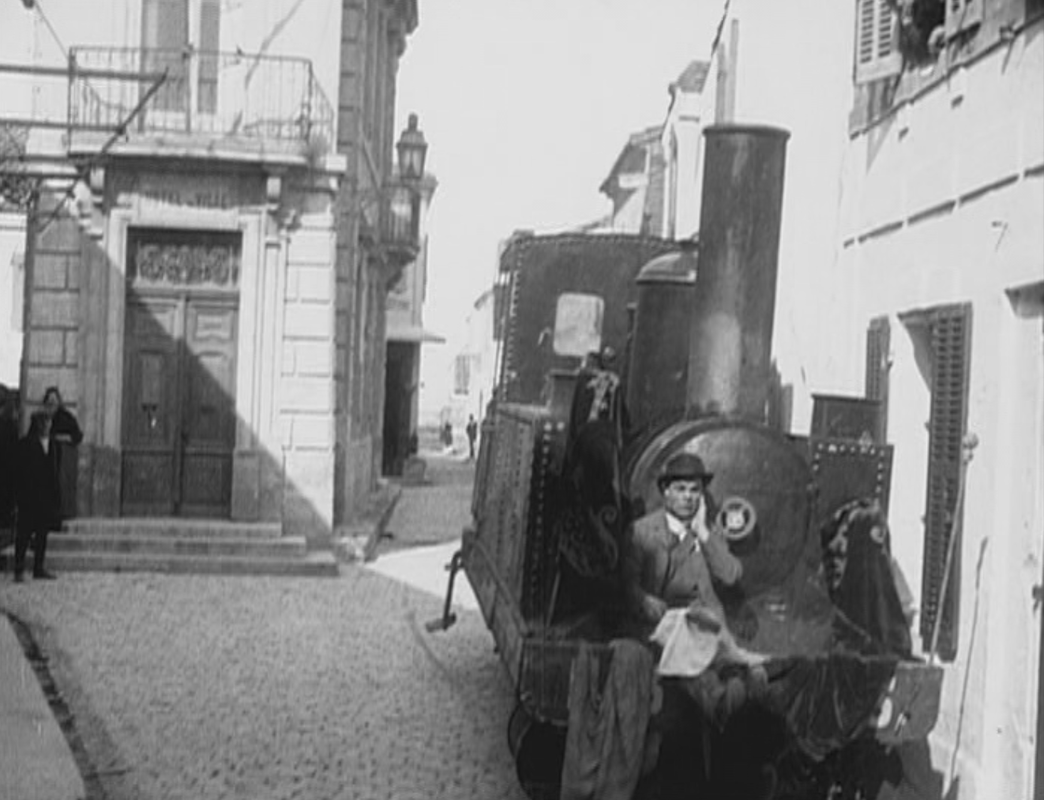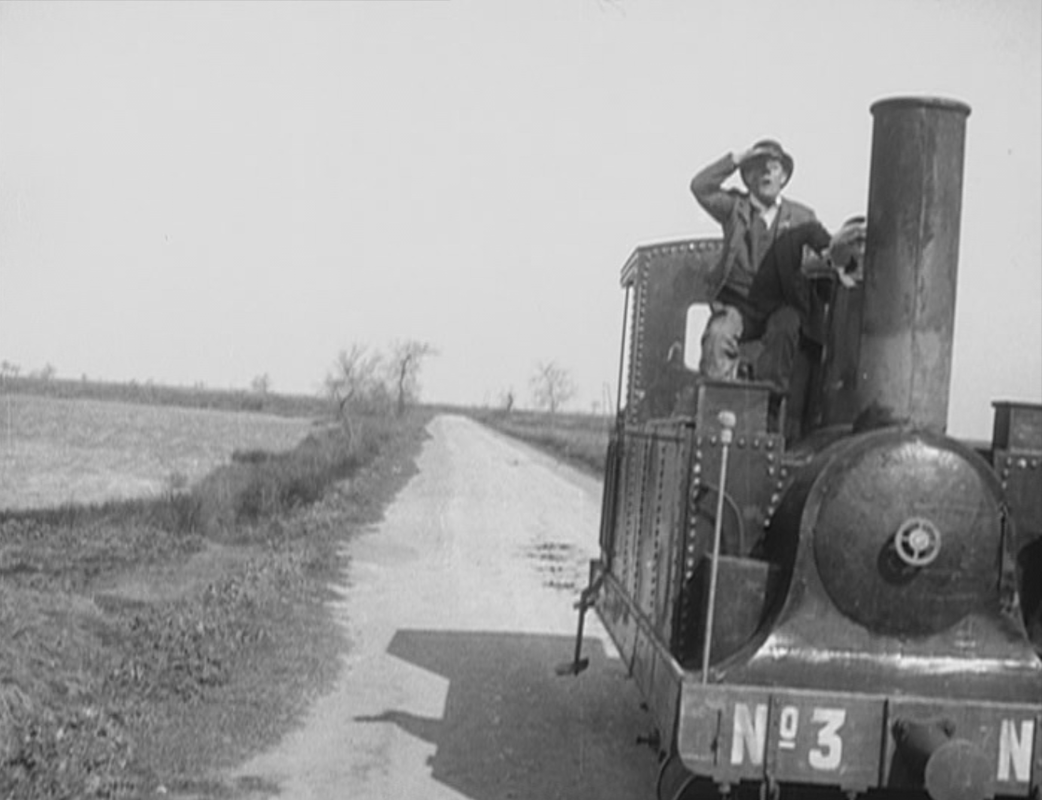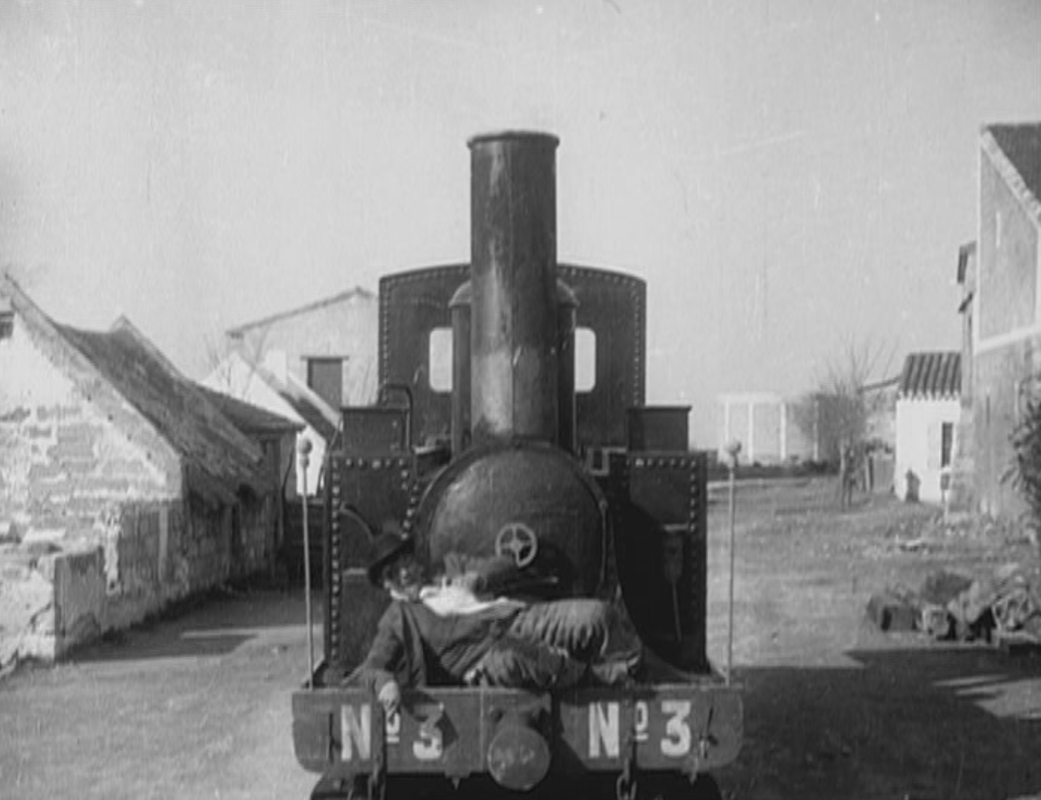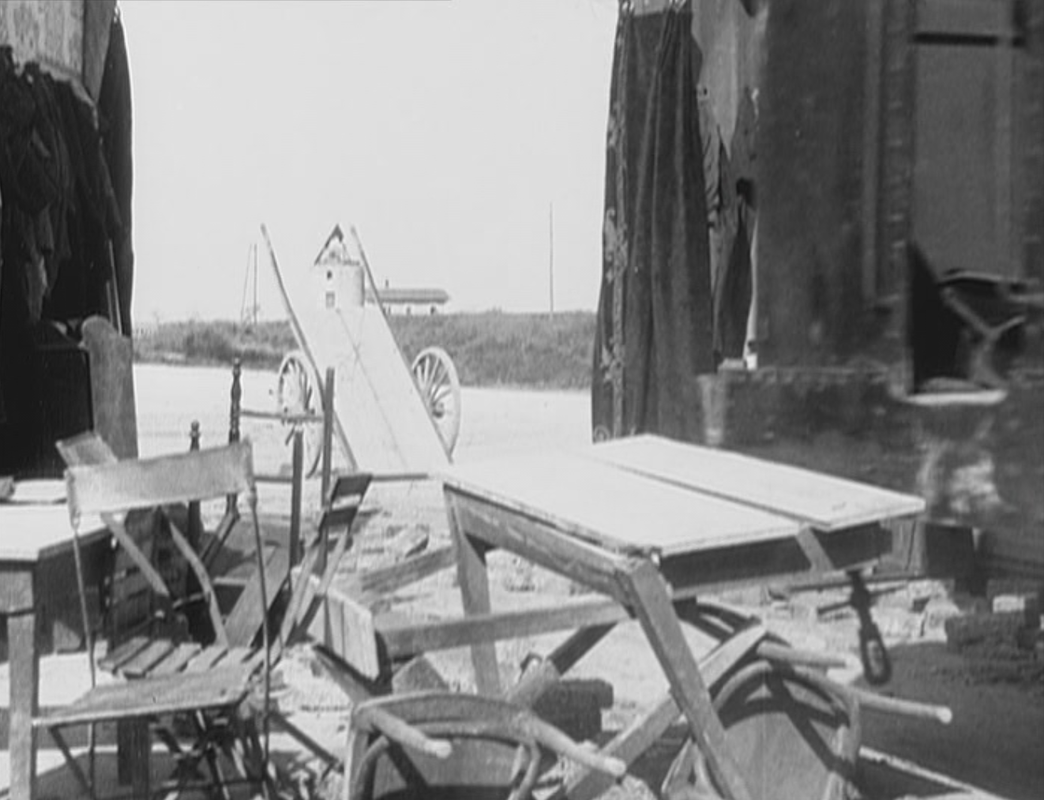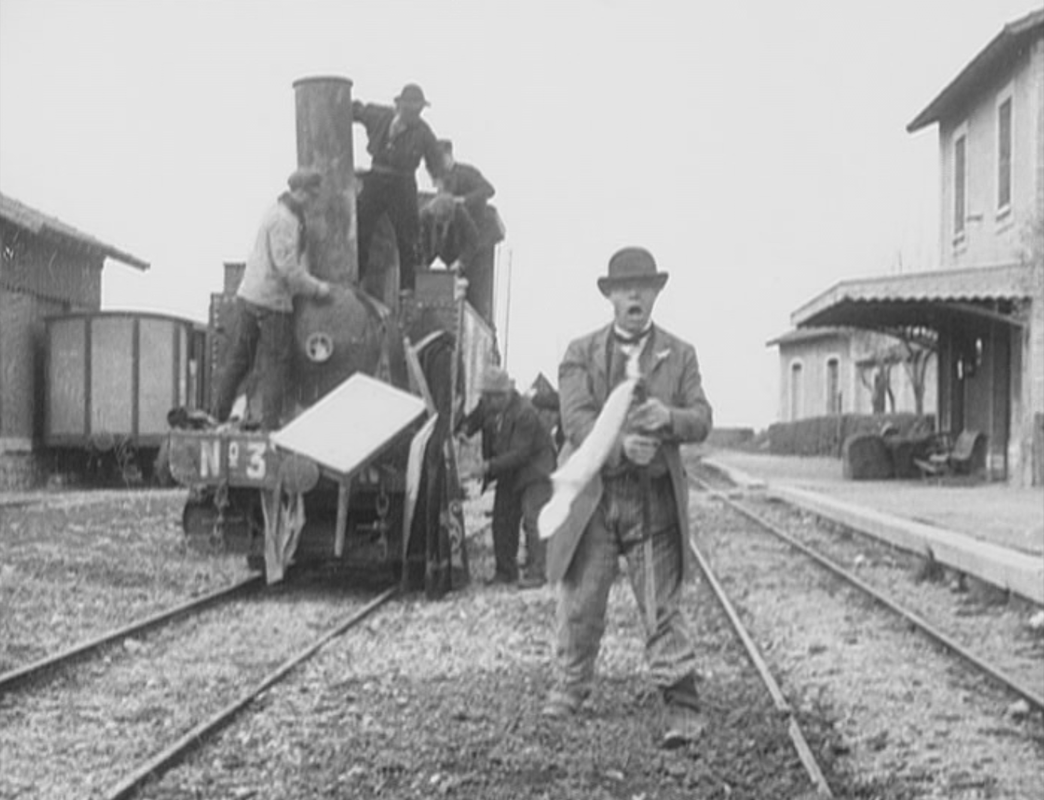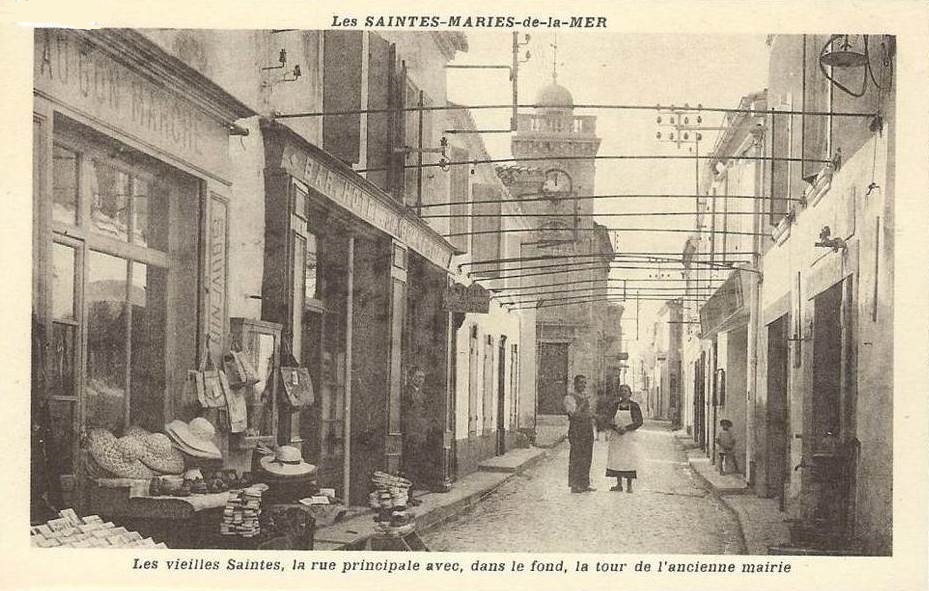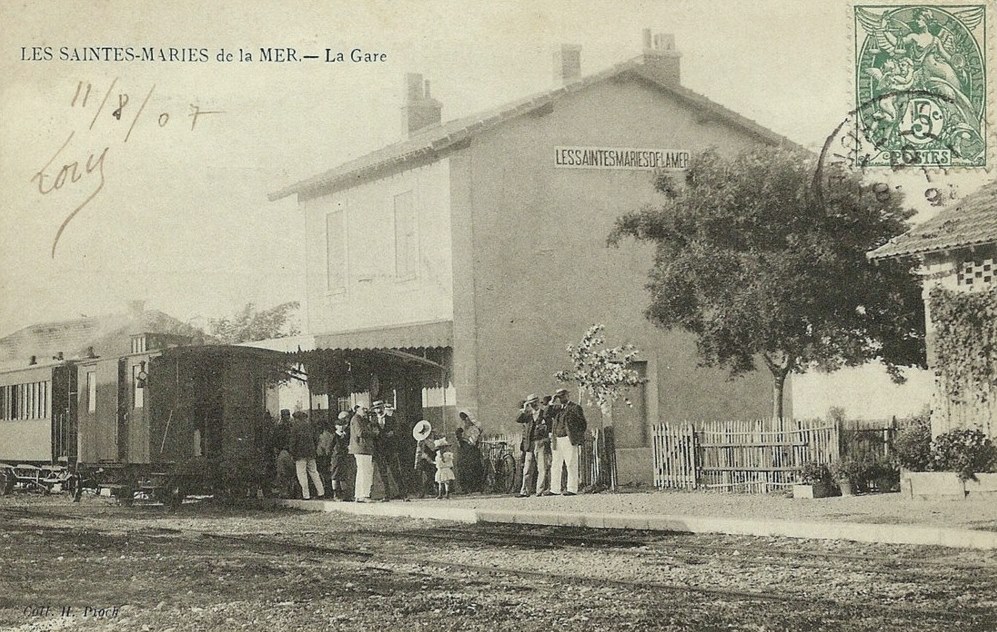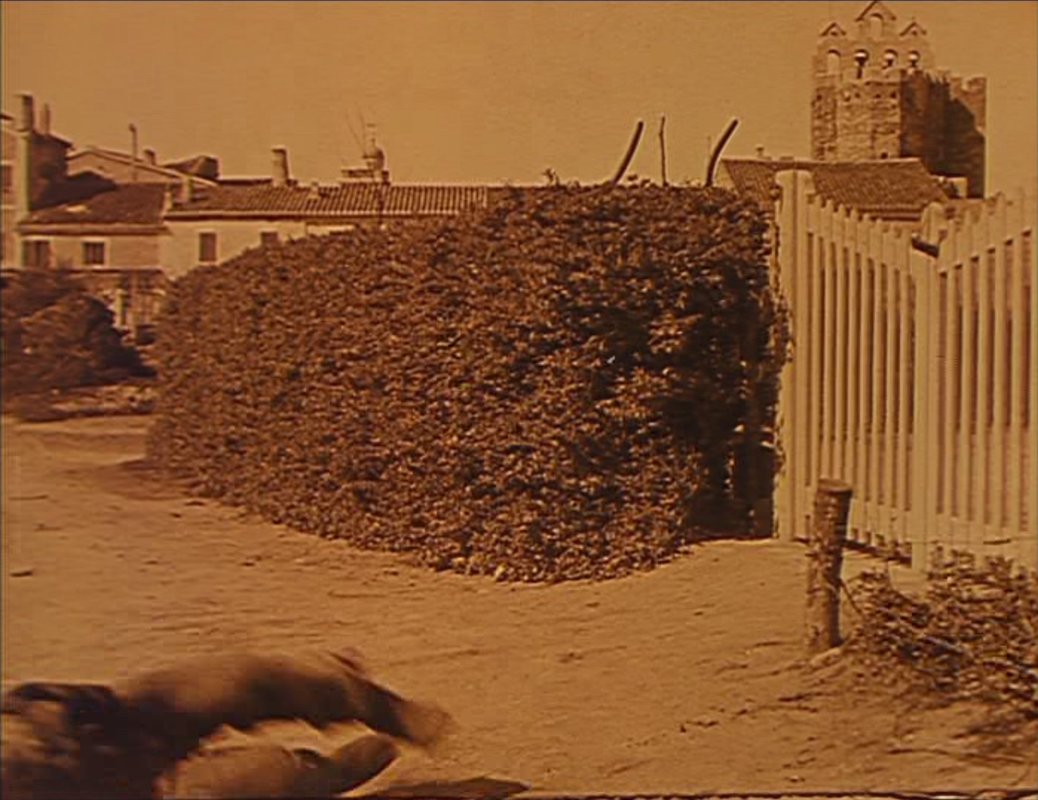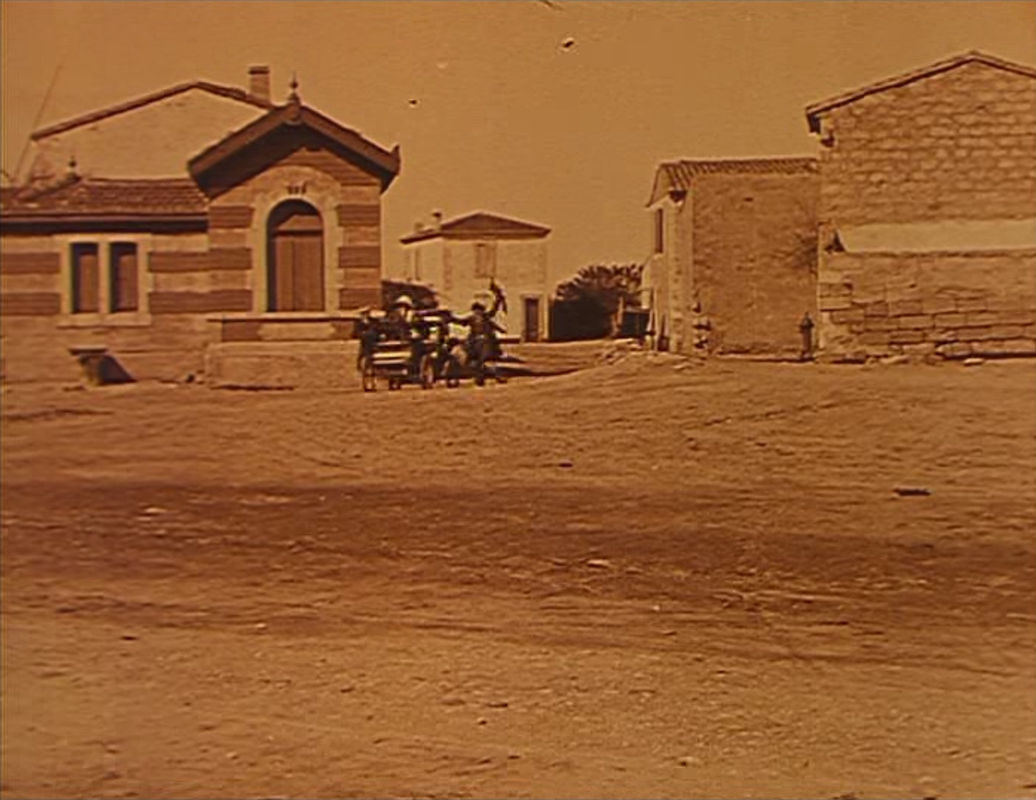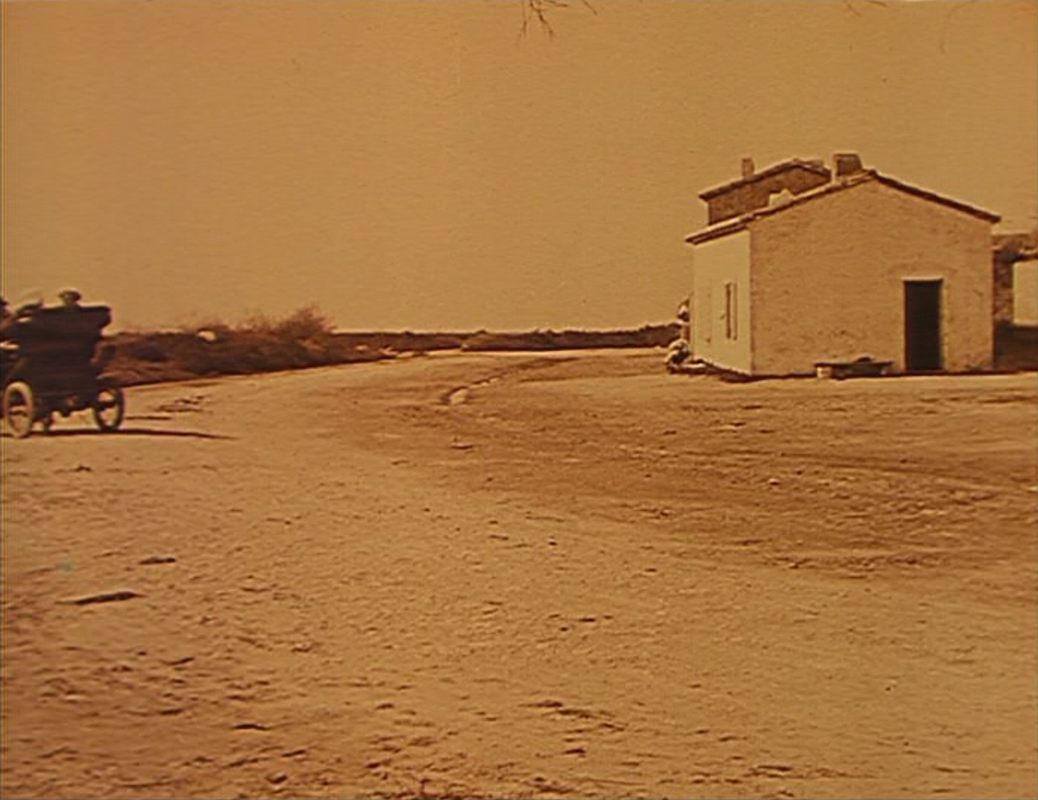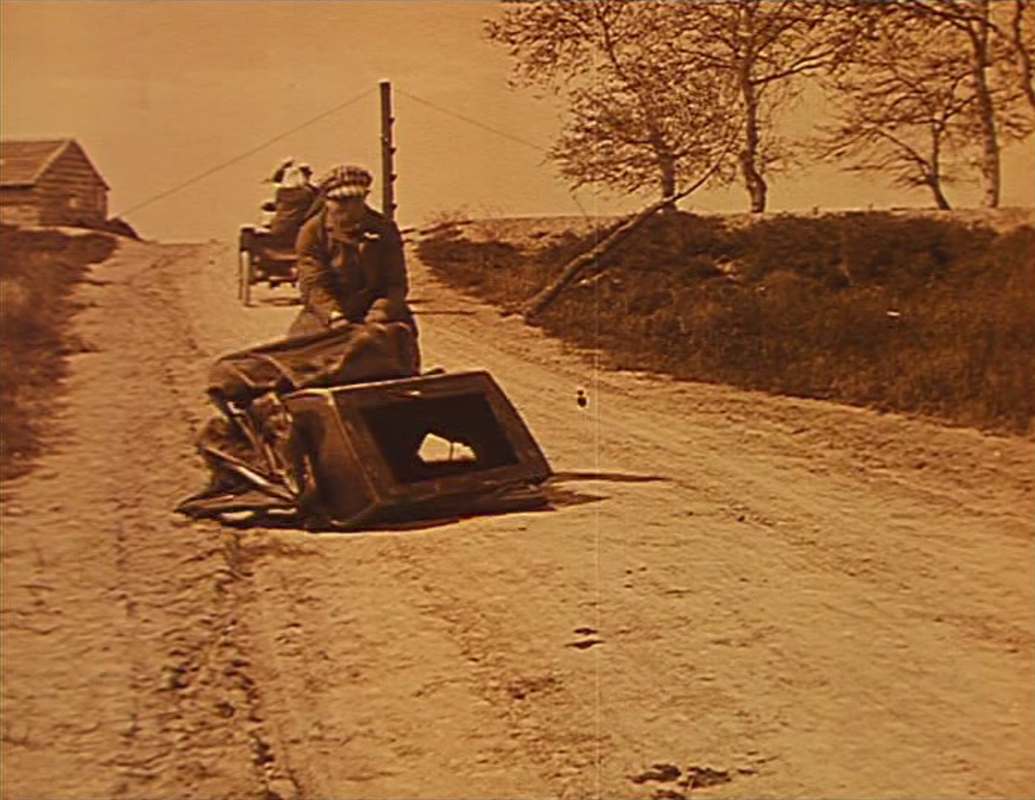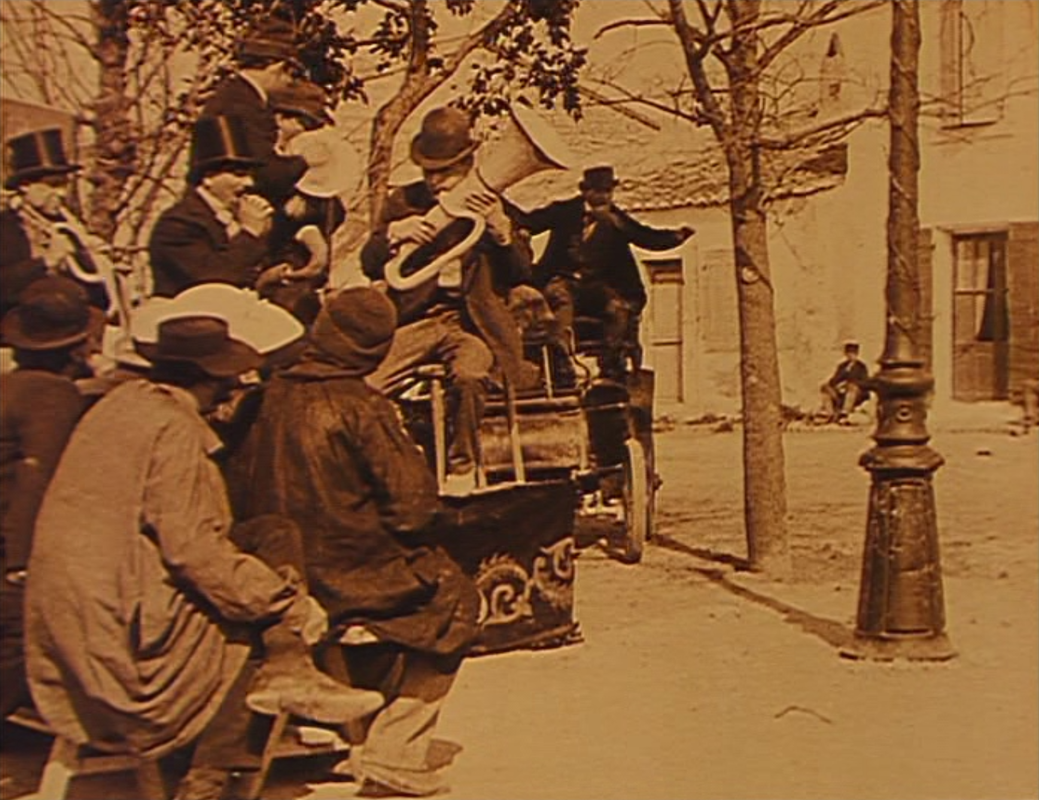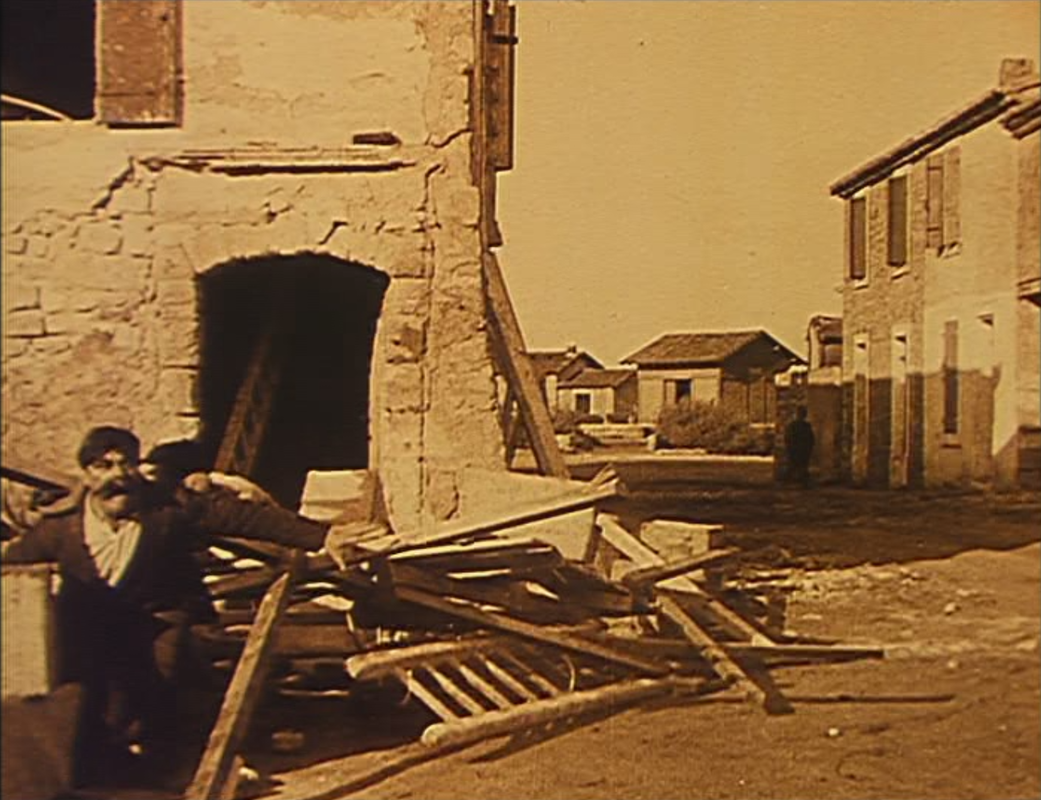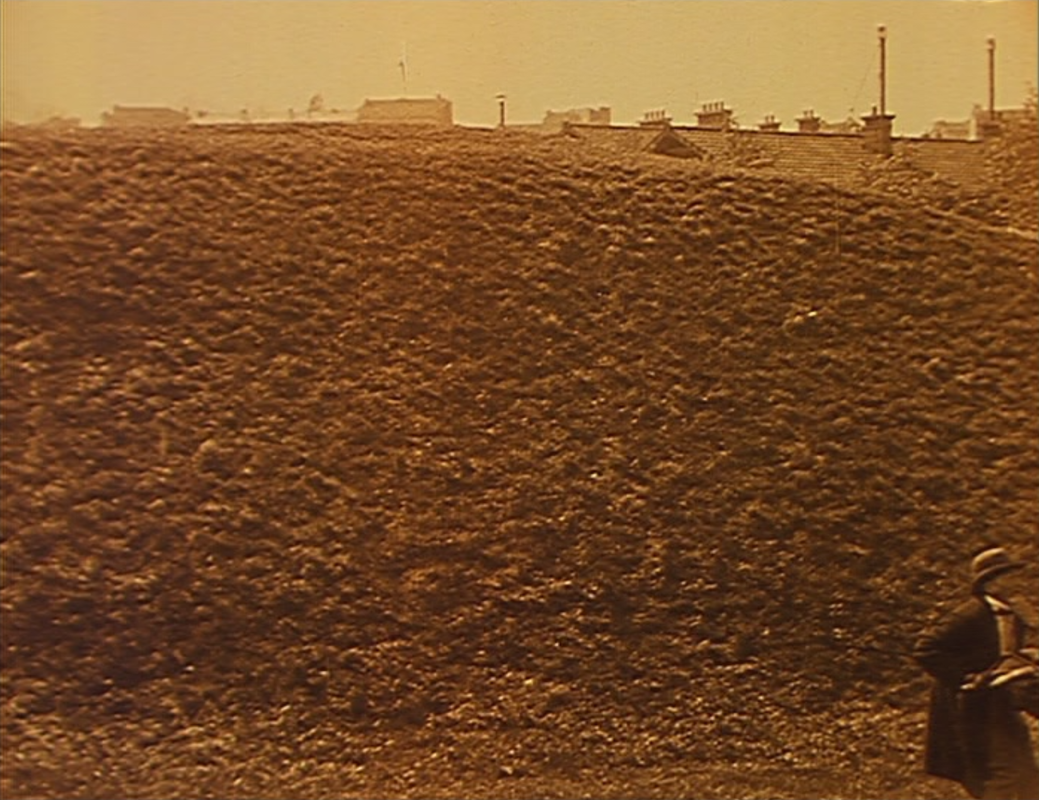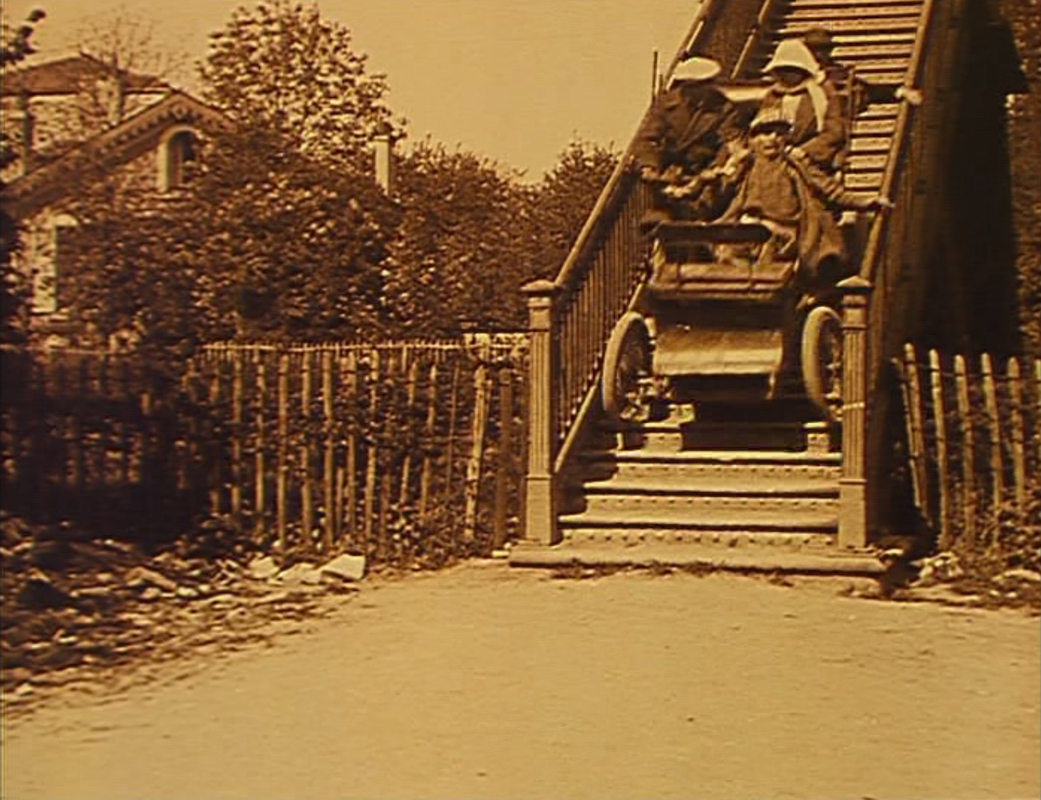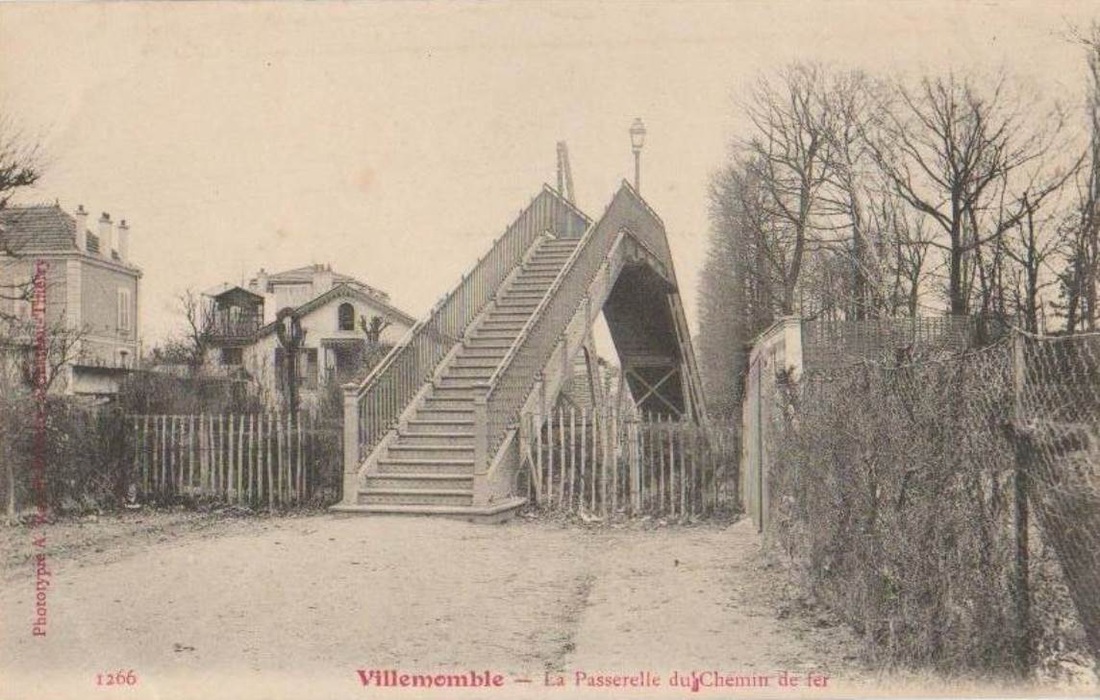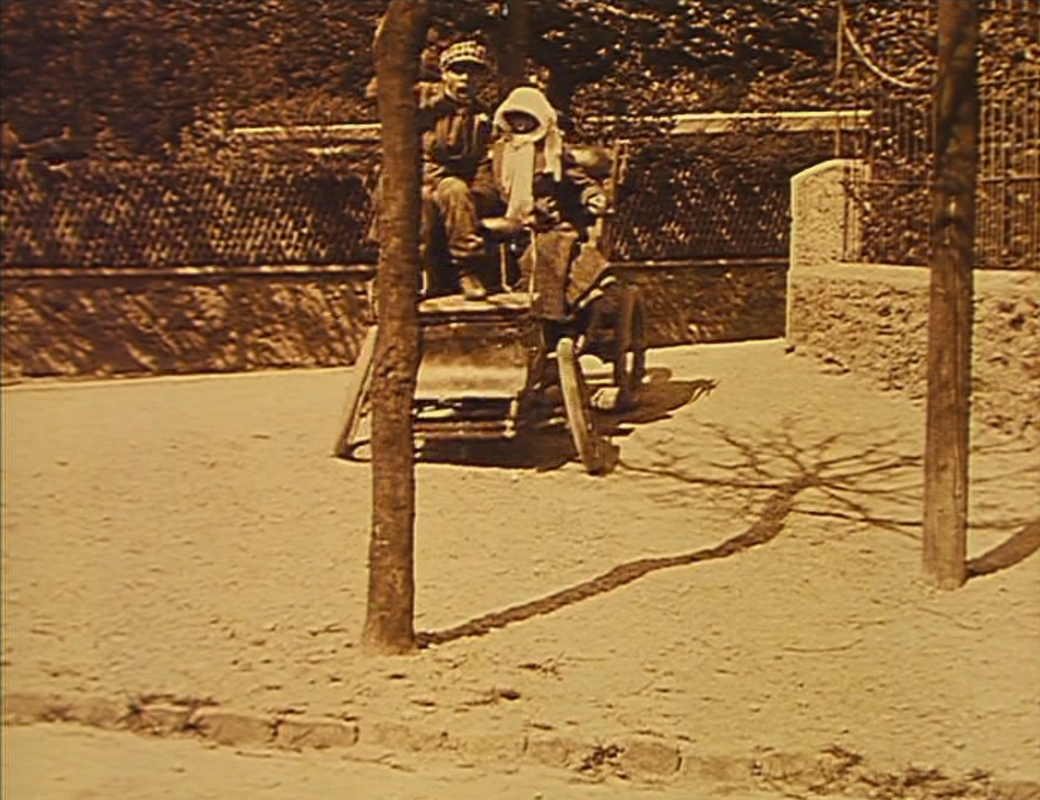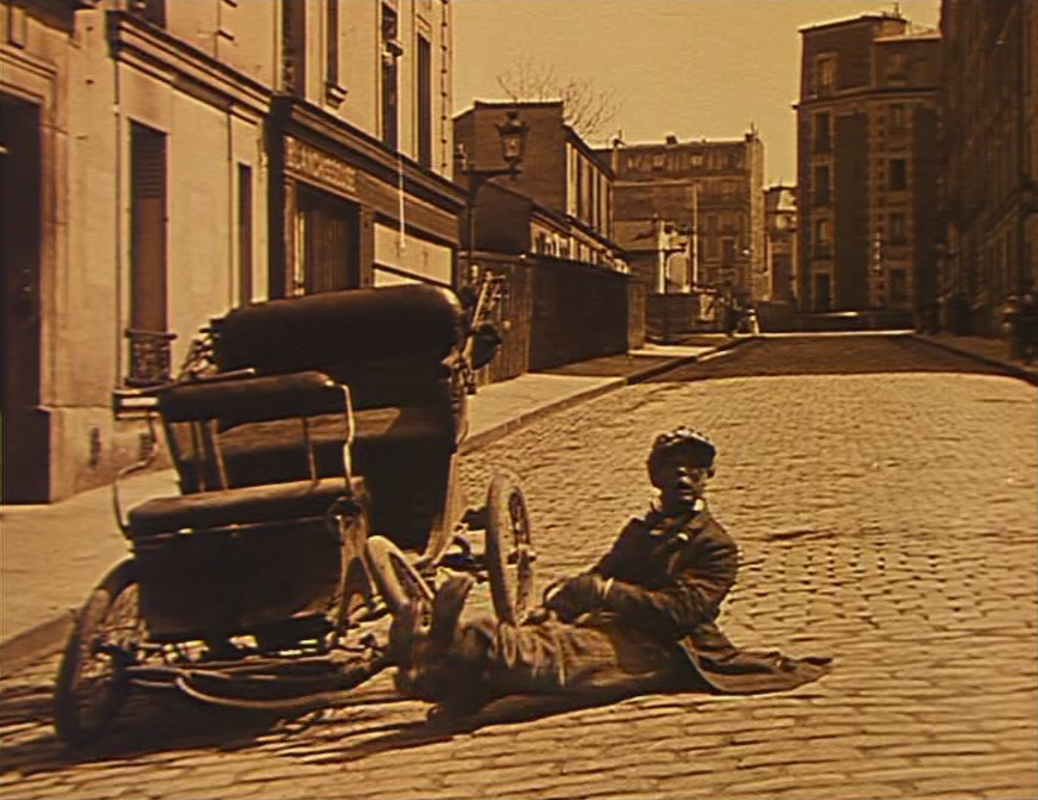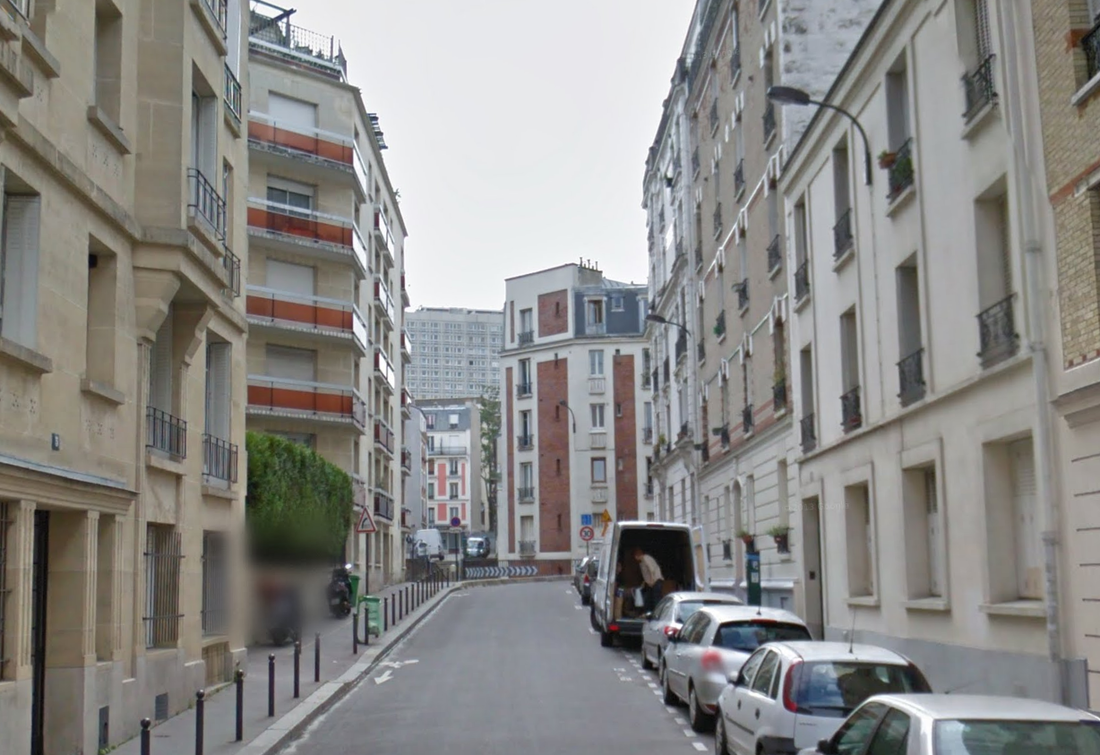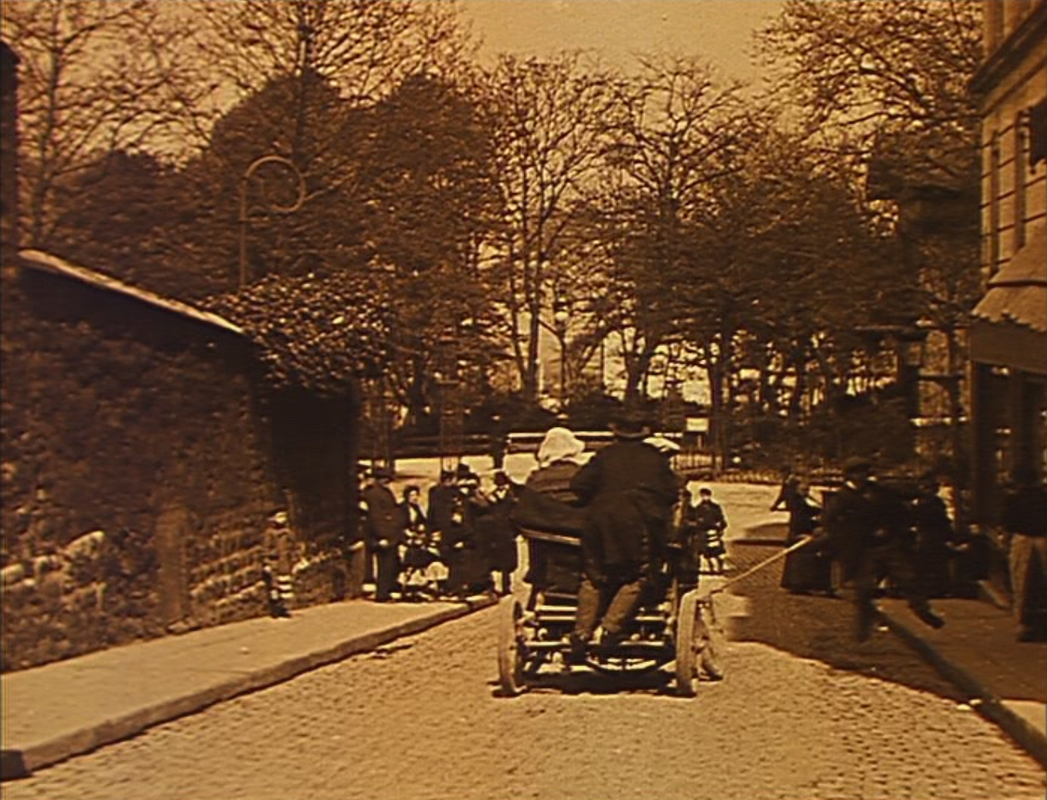A Remarkable Journey in Zigoto's New Motor-Car (1912)
In Jean Durand's 1912 film Zigoto promène ses amis, called in English Zigoto and His New Motor-Car, Zigoto and friends set out from his home in a car that, failing an authoritative identification from the Internet Movie Car DataBase, I think is a c. 1900 De Dion Bouton vis-à-vis (correction or confirmation here, please).
Their journey takes them through twelve different exteriors, with three interiors interspersed (studio constructions of a café, a grocer's shop and a men's outfitters). The film begins and ends with the same interior view of Zigoto's home. Two of the exteriors are recognisably in the vicinity of the Gaumont studios in Paris, near the Buttes Chaumont, but most of the rest have eluded identification, including - for a while - the starting point of the journey:
Their journey takes them through twelve different exteriors, with three interiors interspersed (studio constructions of a café, a grocer's shop and a men's outfitters). The film begins and ends with the same interior view of Zigoto's home. Two of the exteriors are recognisably in the vicinity of the Gaumont studios in Paris, near the Buttes Chaumont, but most of the rest have eluded identification, including - for a while - the starting point of the journey:
I looked everywhere in Paris and the surrounding districts for that distinctive three-pointed bell tower, but only came across it by chance when looking at a completely different location favoured by Gaumont filmmakers, the Camargue region of southern France, around the Rhône delta:
The tower is that of the medieval church at Saintes Maries de la Mer:
The church can be seen in close-up in another Durand comedy, Onésime et le coeur du tzigane (1913):
Durand also made Westerns in the Camargue region, but in those films there was no place for a 700-year-old edifice in the background or foreground. Mostly these Westerns featured the spectacular landscape, often alongside the railway line that runs through the region. An abandoned windmill next to the railway turns up in several of Durand's Camargue films:
And in Zigoto et la locomotive there is a spectacular reverse tracking shot down the main street of Saintes-Marie de la Mer, following a derailed locomotive:
Topographically speaking, Zigoto et la locomotive is typical of Gaumont productions made away from the studios in Paris, in its concentration on the one location. The film begins and ends at the railway station and offers six different views of Saintes-Maries de la Mer and environs, even while avoiding its obvious landmarks, the church and the amphitheatre. The door in the seventh image below is that of the mairie:
Though it does have a view of the church, Zigoto promène ses amis is not so firmly attached to Saintes-Maries de la Mer as a locale. These two views are definitely of the town:
And these four look like they are somewhere in the area:
But this view, which comes between the third and fourth above, must be somewhere else, because the roofs visible behind the ridge are quite untypical of houses in the Camargue:
In the the ninth exterior view we have definitely left the Camargue:
This is the footbridge over the railway at Villemomble, a town in the suburbs east of Paris that was a frequent location in Gaumont films, especially those by Louis Feuillade, who lived in Villemomble.
I cannot locate the following shot, but I do not think we have returned to the Camargue. The walls, fencing and vegetation all suggest the Paris region, probably Villemomble again:
There is no doubt about the penultimate exterior:
This is the rue de l'Encheval, metres from the Gaumont studios on the rue de la Villette, Paris, 19e:
I have found this location in seven different Gaumont films, from Alice Guy's Le Lit à roulettes in 1907 to Louis Feuillade's Le Gamin de Paris in 1923.
The last exterior in Zigoto promène ses amis follows coherently on from the above, since we are in the rue de la Villette, just after the junction with the rue de l'Encheval:
The last exterior in Zigoto promène ses amis follows coherently on from the above, since we are in the rue de la Villette, just after the junction with the rue de l'Encheval:
The car is heading towards the parc des Buttes Chaumont. Here is a reverse shot of the same location:
Zigoto has returned home, though when he had set out from home he was over 600 kilometres away from the rue de la Villette, on the Mediterranean coast.
With so short a film - it lasts about five minutes - we can normally rely on the locations being close to each other geographically. In this respect Zigoto promène ses amis is unusual; in most other respects it is a standard comedy in the 'out-of-control vehicle', 'unleashed animal' or 'unruly human' mode that Jean Durand made his speciality. To close, here are two teams of rugbymen chasing a ball through and destroying the same café and same grocer's shop destroyed by Zigoto in his car:
With so short a film - it lasts about five minutes - we can normally rely on the locations being close to each other geographically. In this respect Zigoto promène ses amis is unusual; in most other respects it is a standard comedy in the 'out-of-control vehicle', 'unleashed animal' or 'unruly human' mode that Jean Durand made his speciality. To close, here are two teams of rugbymen chasing a ball through and destroying the same café and same grocer's shop destroyed by Zigoto in his car:
